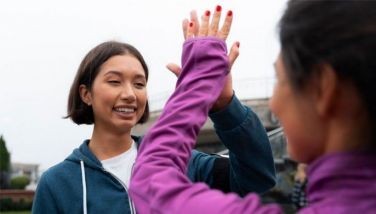Leading kids away from the dangers of lead
We can’t stress enough the need to protect our children from the dangers of toxic lead.
Thankfully, now comes a book that does just that. At the National Children’s Book Day Book Fair held last July 25 at the Ateneo de Manila University’s Rizal Library, the EcoWaste Coalition, a non-profit advocacy group for public health and the environment, launched the first-ever Filipino children’s storybook that discusses the lead hazards in a child’s environment and what can be done to avoid exposure to lead.
The picture-pretty storybook titled Ang Makulay na Bahay (The Colorful House) was written in Filipino by Dr. Luis P. Gatmaitan, a medical doctor and an award-winning author of children’s books, stories, and essays, and illustrated by graphic artist Gilbert F. Lavides and retold in English by Richard P. Nollen.
“This storybook tackles lead poisoning, a serious global public health issue, in a simple and stimulating way from the lens of a typical Filipino family who is unaware of the chemical hazards to children’s health,” said Thony Dizon, coordinator of the EcoWaste Coalition’s Project Protect. “It tells the story of how Nanay Nida’s eldest son Mardee got exposed to lead in paint and dust and how it affected his ability to learn, pay attention and interact with others, and what she and her husband Simon did to remedy the situation.”
Succinctly written and creatively illustrated, the very informative storybook tells us how children can get lead poisoning, such as by playing with and biting toys that contain lead, by sucking on their fingers after playing in the dirt or crawling on the floor, or by ingesting paint chips or soil that contains lead.
According to the EcoWaste Coalition, the storybook will hopefully contribute to the implementation of the government’s Chemical Control Order for Lead and Lead Compounds which, among other provisions, prohibits the use of lead in the production of toys and school supplies, and phases out leaded decorative paints by 2016 and leaded industrial paints by 2019.
IPEN, a global civil society network for a toxics-free future, discloses, “Children playing indoors or outdoors get house dust or soil on their hands and then ingest it through normal hand-to-mouth behavior. If the house dust or the soil is contaminated with lead, children ingest lead. Hand-to-mouth behavior is especially prevalent in children aged six years and under, the age group most easily harmed by exposure to lead. A typical one- to six-year-old child ingests approximately 100 milligrams of house dust and soil each day.”
IPEN warns, “While lead exposure is also harmful to adults, lead exposure harms children at much lower doses, and the health effects are generally irreversible and can have a lifelong impact. The younger the child, the more harmful lead can be, and children with nutritional deficiencies absorb ingested lead at an increased rate. The human fetus is the most vulnerable, and a pregnant woman can transfer lead that has accumulated in her body to her developing child. Lead is also transferred through breast milk when lead is present in a nursing mother.”
According to the World Health Organization, “At high levels of acute exposure, lead attacks the brain and central nervous system to cause coma, convulsions, and even death.”
Russian scientist Dr. Olga Speranskaya, co-chairperson of IPEN, a global civil society network promoting safe chemical policies and practices, said the book “is a great example of a publication that raises the awareness of parents and children about chemical hazards.”
Filipino Von Hernandez of Greenpeace International observed, “Colors need not be associated with poison! This is the literal yet profound message that this book offers. For our children to lead truly productive and colorful lives, we have an obligation as parents and responsible citizens to ensure that their living environment is free from significant sources of toxics exposure.”
The publication of the storybook was made possible through financial assistance from the European Union, IPEN, and the Swedish Society for Nature Conservation.
And now, here are some practical lead poisoning prevention tips:
• Refrain from buying and giving children’s products with paint coatings unless certified lead-safe.
• Watch out for toys, which have been recalled in the US, Europe, and other places due to lead content and other health and safety issues, that may find their way to the Philippines.
• Advise young children to wash their hands before meals to avoid ingesting dust that may be contaminated with lead and other toxins.
• Keep your house clean and dust-free: Wet-mop the floor and wet-wipe the windows, windowsills, window blinds, and shades. Keep children away from dusty areas or from places where paint is chipping or peeling.
• Choose and use paints with no added lead; handle surfaces coated with lead paint carefully and do not scrape or sand lead paint to avoid spreading lead dust.
Yes, by all means, lead our children away from this very strong poison called lead.



















